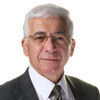
Michael Henein is a professor of cardiology at Umeå University and Heart Centre, Sweden.

A consultant cardiologist in both Sweden and the UK, Michael Henein provides clinical cardiology services as well as transthoracic, stress and transoesophageal echo and carotid scanning at the Harley Street Clinic. He previously spent 15 years at the Royal Brompton Hospital as a consultant in cardiology and echocardiography having led the echocardiography department between 2001 and 2006.
To date, Professor Henein has supervised 21 PhD students at Imperial College and Umeå University and 100 MSc students between Imperial and Canterbury Christchurch University. He has also published more than 400 cardiology papers in peer-reviewed journals and edited seven textbooks.
Professor Henein is passionate about supervising international students and establishing strong academic partnerships with universities across the world. Here, he speaks to Hospital Healthcare Europe about the current projects he’s involved in.
You’ve mentored and encouraged PhD and MSc students from all over the world. What drives your passion for this collaboration?
Most of my projects are done with either my current or previous PhD students who’ve graduated. Personally, I think it’s very important to establish strong academic partnerships with international universities to help with the collaborative exchange of ideas, skills and approaches towards difficult clinical issues and research with good clinical and academic outcomes.
I’ve mostly worked with students from the UK, Sweden, Kosovo, Greece, Italy, Nigeria, Ireland, Egypt and China, all of whom have graduated and now hold important clinical and academic positions in their home countries.
There’s been significant media attention recently on elite athletes seemingly developing heart problems mid-match. What are your thoughts?
Strong evidence suggests that people who undergo frequent strenuous exercise could develop arrhythmia or heart failure. We do not have any means by which we can predict which individuals will switch from being healthy to developing problems in the future, but we know it can end in disaster.
About six years ago, we looked at the effect of regular strenuous exercise on adolescents’ heart function. I’ve suggested to Flavio D’Ascenzi, one of my former PhD students, who is currently associate professor in Siena, in Italy, that we should get that group back on a 10-year follow-up. We would test them using the same methods used before to see who remains healthy and who may have developed changes and repeat again in another 10 years. These longitude studies are very difficult to design and ascertain, but this is a very good start with quite a unique group of individuals.
You and your team are currently involved in a research project on hypertension. Can you tell us more?
Hypertension is the most common disease we see in our cardiology practice. Long-standing high blood pressure is known to affect heart structure and function. Although it can be controlled, many people develop coronary heart disease (CHD) and strokes as a result. They could be symptomatic or asymptomatic, but it needs to be properly assessed.
We’re currently looking at identifying the predictors of CHD in these patients using non-invasive investigations like dobutamine stress echocardiography. This is a well-established, non-invasive investigation for significant coronary artery disease, which has zero radiation and is very patient friendly. Now’s the time to pull all the available evidence and do a detailed meta-analysis.
You say you have a broad interest in research based on clinical questions we do not have answers for. Can you provide an example?
It’s very difficult to believe that atherosclerosis pathology chooses one branch of the aorta and doesn’t touch the rest. The scientific question here is, ‘is there any strong evidence to show that atherosclerosis disease is shared between different arterial systems?’.
In 2021, we published a paper on the results of a meta-analysis that compared the relationship between the phenotypic manifestation of coronary and carotid atherosclerosis – the two most commonly affected systems by atherosclerosis – using available imaging techniques. A total of 89 papers with 22,683 patients comparing carotid and coronary atherosclerosis were included in the analysis.
Our findings showed moderate relationship between carotid intima-media thickness and severity of coronary artery disease. Stenosis is important and not only serves in predicting the presence of severe disease but also helps in identifying patients demonstrating established arterial disease who need optimum risk factors control and follow-up management.
The results of the study supported the concept that atherosclerosis affects both carotid and coronary systems – although not always in an identical phenotypic manner. They also highlighted the benefits of examining carotid arteries whenever coronary artery disease is suspected.
You recently investigated the relationship between the presence and severity of carotid and coronary calcification in a group of patients with coronary artery disease. What did you discover?
The study was conducted on 63 patients presenting with unstable angina or positive stress test for myocardial ischaemia. All patients had CT scans of the carotid and coronary arteries using the conventional protocol and Agatston scoring system. Risk factors for atherosclerosis were also analysed for correlation with the extent of arterial calcification. In patients with coronary disease, the carotid calcification pattern appeared to be similar between the right and left systems in contrast to that of the coronary arteries. The coronary artery calcium (CAC) score correlated only modestly with the carotid score, despite being significantly higher at 10-fold. Hypertension was related to the CAC score, while diabetes and dyslipidaemia correlated with coronary calcification.
Why is a collaborative approach to working so important?
We can learn from one other. I have an interest in echocardiography, for example, but I cannot do it on my own. In Sweden Norrlands Heart Center, I had a technician who worked closely with me all the time. He updated me on new technology and the latest publications and software providers. We worked as a team and were able to look at our current practice and think, ‘why don’t we try this or that ourselves’. Myocardial deformation measurements using speckle tracking technology is an example that we developed recently. Over the years, I learned new things from this technician, who has since become a professor, and we have written many papers together.
When did you first learn about CT scanning for the heart?
It was at a heart centre in Germany in 2001/2002, many years before CT coronary scanning came to England. Back in those days, it was harder to convince anyone to start thinking about implementing them in routine practice. Now, this scanning for coronary disease is everywhere, which is wonderful, and time has changed, which is encouraging.
If we can open our eyes to what’s happening around us in Europe and North America and see the new procedures and techniques being developed locally, and have an open-minded approach, we can – in a humble way – be ahead of the game.
We can also be prepared for patients who are increasingly doing their own research on the internet and may catch us unaware when they come to us with questions about procedures or treatments they’ve found in operation in other countries.
Michael Henein is an advisory board member for HHE Clinical Excellence in Cardiovascular Care. He will be chairing a session entitled ‘Cardiology over 100 years’ at the event on 10 May 2023. Find out more and register for free here.
This article is part of our Clinical Excellence series, which offers valuable first-hand insights into how experts from renowned Centres of Excellence are pursuing innovative approaches to optimise patient care across the UK and Europe.










